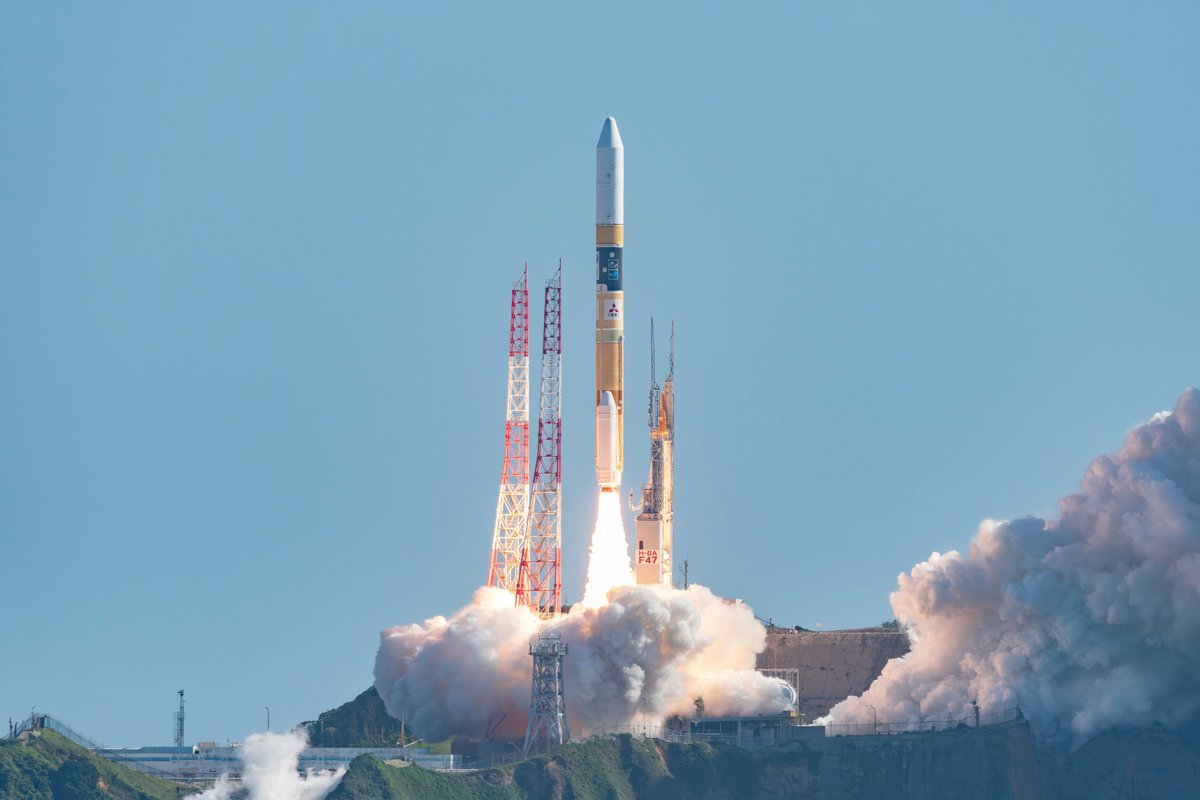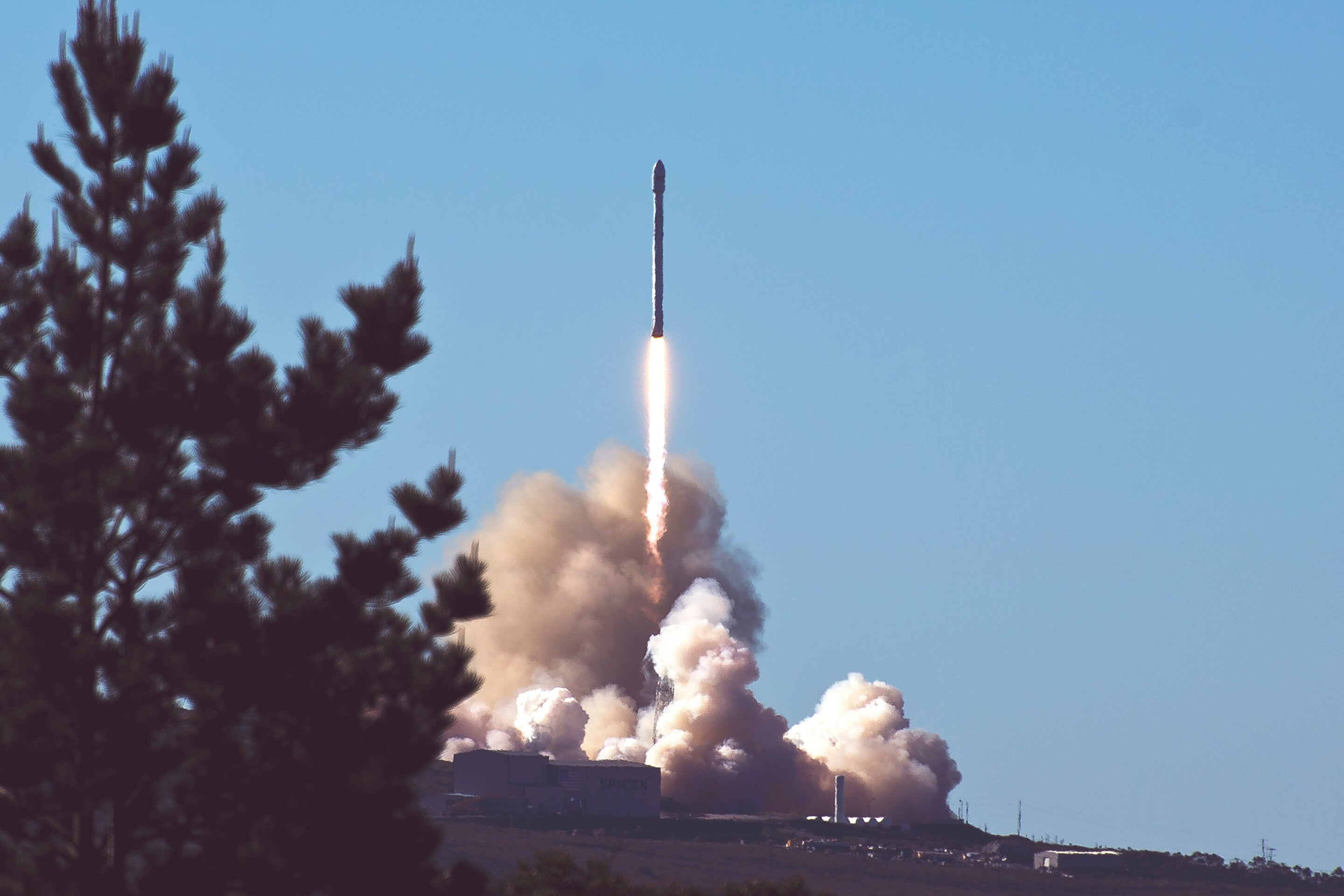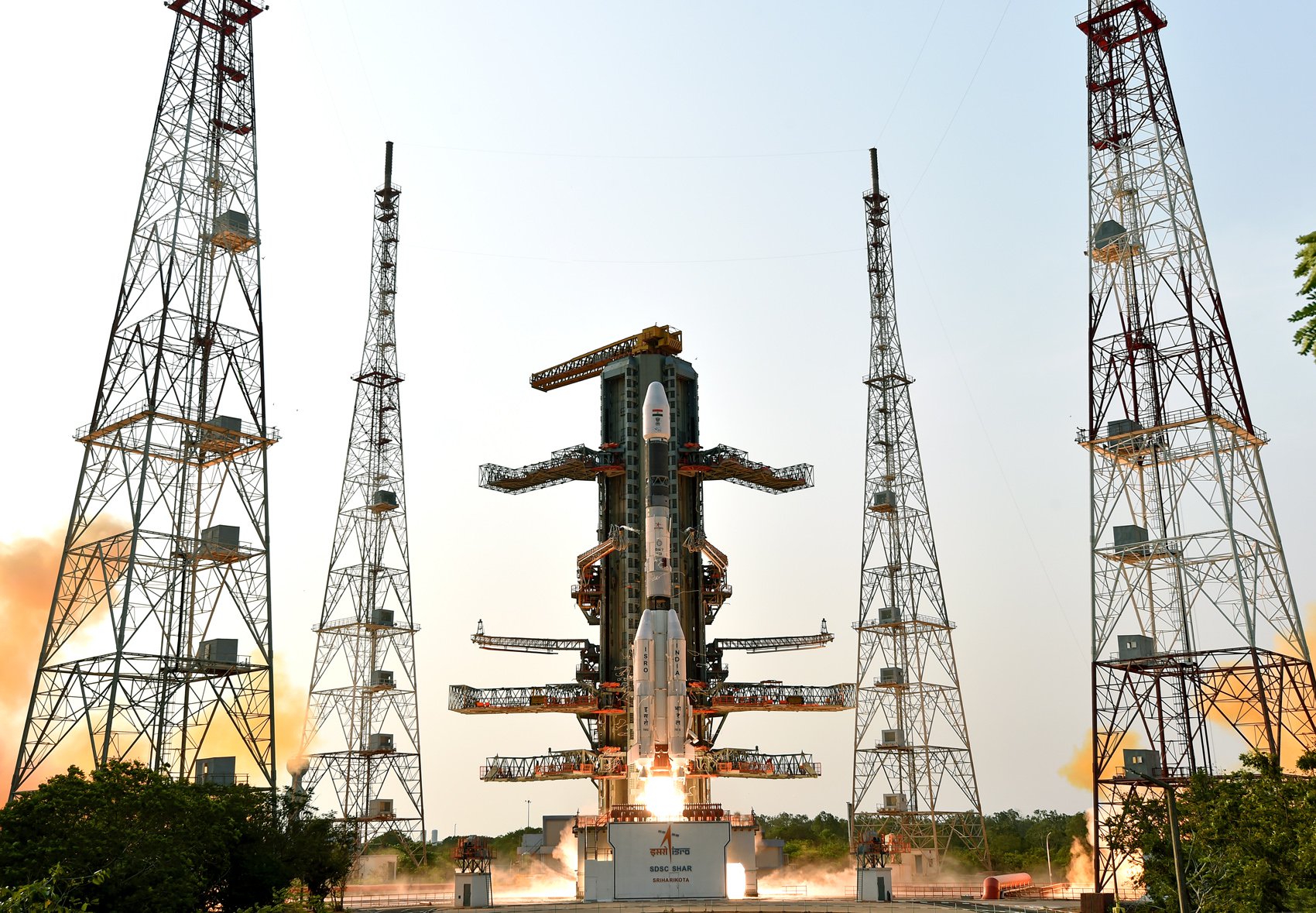· space brief · 6 min read
Space Brief 15 Jun 2025
Today’s highlights focus on the launch preparations for the Dragoon Mission, China’s seismo-electromagnetic satellite launch, NASA budget cut impacts, and a major expansion by American Pacific Corporation.

📄Top Stories
York Space Systems is preparing for the inaugural launch of its Dragoon Mission, which aims to enhance missile warning capabilities and connectivity for warfighter platforms. China, in collaboration with European partners, has successfully launched a seismo-electromagnetic satellite designed to detect electromagnetic precursors to natural disasters. Meanwhile, the European Space Agency examines the implications of U.S. NASA budget cuts. Additionally, American Pacific Corporation finalizes a substantial capacity expansion to back crucial defense and space programs.
📰Detailed Coverage
York Preps Inaugural Dragoon Mission
York Space Systems is gearing up for the launch of its first Dragoon satellite, part of a planned 12-satellite constellation. This mission is pivotal in demonstrating advanced connectivity for missile warning and targeting capabilities, essential for military applications.
The Dragoon Mission exemplifies the growing trend of using satellite networks for real-time strategic information. This development underscores the increasing importance of satellite tracking and monitoring, features extensively supported by our web app for defense and research sectors.
Read the full story: SpaceWar
China and Europe Collaborate on Seismo-Electromagnetic Satellite
China has launched its second seismo-electromagnetic satellite with significant contributions from European partners. This satellite aims to study electromagnetic signals that could precede natural disasters like earthquakes, potentially offering early warnings for such events.
This mission represents a crucial advance in international cooperation and scientific research using satellite technology. The new satellite joins a growing list of Earth observation instruments that enhance our capacity to monitor environmental changes from space.
Read the full story: SpaceNews
ESA Confronts Challenges from NASA Budget Cuts
The European Space Agency is assessing the potential impacts of proposed NASA budget reductions on its collaborative projects. These cuts could affect several joint missions and future cooperation paradigms with NASA.
European officials emphasize maintaining robust international partnerships to support space research and development despite financial uncertainties. The situation highlights the dynamic nature of global space alliances and funding.
Read the full story: SpaceNews
American Pacific Expands Capacity for Rocket Motors
American Pacific Corporation has announced a $100 million expansion initiative that has received approval from its parent company. This move will enhance its ability to supply critical components for U.S. and allied space and defense programs.
This strategic investment ensures the continued availability of solid rocket motors, which are vital for national defense and space exploration projects. It signals a robust commitment to strengthening the aerospace supply chain.
Read the full story: SpaceNews
Starship Point-to-Point: More Than a Dream?
SpaceX’s Starship project is exploring Point-to-Point space travel, which would revolutionize rapid transit on Earth. This project envisions using orbital flights to enable swift international travel, potentially transforming global logistics.
While the concept remains largely in the visionary stage, it illustrates SpaceX’s ambition and the innovative possibilities for the space industry. Its development and feasibility are closely watched by space analysts and enthusiasts.
Read the full story: NASASpaceFlight.com
🛰️Satellite Spotlight
- Satellite Name: COSMOS 2434 [GLONASS-M]
- NORAD ID: 32393
- Launch Date: December 25, 2007
- Mission: Navigation satellite as part of the GLONASS (Global Navigation Satellite System) constellation, providing precise positioning services.
- Orbit: Medium Earth Orbit (MEO)
- Operator: KVR/IACG
- Fun Fact: COSMOS 2434 is part of Russia’s GLONASS navigation system, which is crucial for both civilian and military applications and is often compared to the U.S. GPS system.
Track this satellite in real-time on our web app: Track COSMOS 2434 [GLONASS-M]
🌌Space Weather
Current space weather shows Enhanced solar wind (547 km/s).
R0 - S0 - G0
Next 24 Hours: In the coming day, satellite operators can expect no risk of radio blackouts and no risk of solar radiation storms, which bodes well for satellite communication and data transmission. However, users of ground-based radars and telescopes should prepare for periods of G1 (Minor) geomagnetic storms likely occurring on June 15-16 due to the influence of coronal hole high-speed streams (CH HSS). This could temporarily affect navigational systems and ground-based observations. There is also a slight chance for S1 (Minor) solar radiation storms, alongside a potential for R1-R2 (Minor-Moderate) radio blackouts, particularly from June 15-17. Operators should remain vigilant for possible disruptions, though significant impacts are unlikely.
Beyond: Looking ahead to the forecast period from June 9 to July 5, 2025, satellite operators should prepare for elevated solar activity, with a chance for R1-R2 (Minor-Moderate) levels persisting, due to multiple active regions rotating into view from the sun’s far side. While no proton events are anticipated at geosynchronous orbit, the greater than 2 MeV electron flux may rise to high levels on several occasions: June 15-22, June 26-29, and July 2-4, influenced by recurrent coronal holes. Geomagnetic field activity is expected to see heightened levels early on, propelled by the effects of recurrent coronal holes and coronal mass ejections (CMEs). G1 (Minor) geomagnetic storms are likely on June 9 and June 13, while G2 (Moderate) effects are anticipated on June 14-15 due to CH HSS influences. Additional G1 to G2 effects are possible on June 25-26. Overall, conditions are expected to fluctuate between quiet to unsettled for the remainder of the outlook period, with implications for satellite drag particularly relevant to Low Earth Orbit (LEO) satellites during these active phases.
Upcoming Space Launches
June 16
- United Launch Alliance Atlas V 551:
- Project Kuiper (KA-02) from Space Launch Complex 41, Cape Canaveral SFS, FL, USA (17:25 UTC)
- Project Kuiper is a mega constellation of satellites in Low Earth Orbit managed by Kuiper Systems LLC, a subsidiary of Amazon, aimed at offering broadband internet access globally.
- Project Kuiper (KA-02) from Space Launch Complex 41, Cape Canaveral SFS, FL, USA (17:25 UTC)
June 17
- SpaceX Falcon 9 Block 5:
- Starlink Group 15-9 from Space Launch Complex 4E, Vandenberg SFB, CA, USA (00:51 UTC)
- A batch of satellites for SpaceX’s Starlink mega-constellation project for space-based Internet communication.
- Starlink Group 15-9 from Space Launch Complex 4E, Vandenberg SFB, CA, USA (00:51 UTC)
June 18
- SpaceX Falcon 9 Block 5:
- Starlink Group 10-18 from Space Launch Complex 40, Cape Canaveral SFS, FL, USA (05:38 UTC)
- Another batch of satellites for the SpaceX’s Starlink mega-constellation project.
- Starlink Group 10-18 from Space Launch Complex 40, Cape Canaveral SFS, FL, USA (05:38 UTC)
June 19
- Russian Space Forces Angara A5/Briz-M:
- Kosmos (Unknown Payload) from Launch Pad 35/1, Plesetsk Cosmodrome, Russian Federation (02:30 UTC)
- Unidentified payload for the Russian military.
- Kosmos (Unknown Payload) from Launch Pad 35/1, Plesetsk Cosmodrome, Russian Federation (02:30 UTC)
- SpaceX Falcon 9 Block 5:
- Axiom Space Mission 4 from Launch Complex 39A, Kennedy Space Center, FL, USA (08:53 UTC)
- This mission will carry a professionally trained commander alongside three private astronauts to the International Space Station for an eight-day stay.
- Axiom Space Mission 4 from Launch Complex 39A, Kennedy Space Center, FL, USA (08:53 UTC)
June 20
- SpaceX Falcon 9 Block 5:
- Starlink Group 10-23 from Space Launch Complex 40, Cape Canaveral SFS, FL, USA (06:32 UTC)
- Launching a batch of satellites for SpaceX’s Starlink project.
- Starlink Group 10-23 from Space Launch Complex 40, Cape Canaveral SFS, FL, USA (06:32 UTC)
- China Aerospace Science and Technology Corporation Long March 3B/E:
- Unknown Payload from Launch Complex 3 (LC-3/LA-1), Xichang Satellite Launch Center, People’s Republic of China (12:27 UTC)
- Details TBD.
- Unknown Payload from Launch Complex 3 (LC-3/LA-1), Xichang Satellite Launch Center, People’s Republic of China (12:27 UTC)
- SpaceX Falcon 9 Block 5:
- Transporter 14 (Dedicated SSO Rideshare) from Space Launch Complex 4E, Vandenberg SFB, CA, USA (21:19 UTC)
- A dedicated rideshare mission to a sun-synchronous orbit with multiple small satellites for various customers.
- Transporter 14 (Dedicated SSO Rideshare) from Space Launch Complex 4E, Vandenberg SFB, CA, USA (21:19 UTC)
June 21
- Blue Origin New Shepard:
- NS-33 from West Texas Suborbital Launch Site/Corn Ranch, Corn Ranch, Van Horn, TX, USA (12:30 UTC)
- The 13th crewed flight for the New Shepard program and the 33rd flight in its history.
- NS-33 from West Texas Suborbital Launch Site/Corn Ranch, Corn Ranch, Van Horn, TX, USA (12:30 UTC)
June 23
- Japan Aerospace Exploration Agency H-IIA 202:
- GOSAT-GW from Yoshinobu Launch Complex LP-1, Tanegashima Space Center, Japan (16:33 UTC)
- GOSAT-GW is JAXA’s next-generation satellite for monitoring greenhouse gases and the water cycle, contributing to global warming countermeasures and climate predictions.
- GOSAT-GW from Yoshinobu Launch Complex LP-1, Tanegashima Space Center, Japan (16:33 UTC)
Note: Launch dates and times are subject to change due to technical or weather considerations.

Maurice Stellarski




